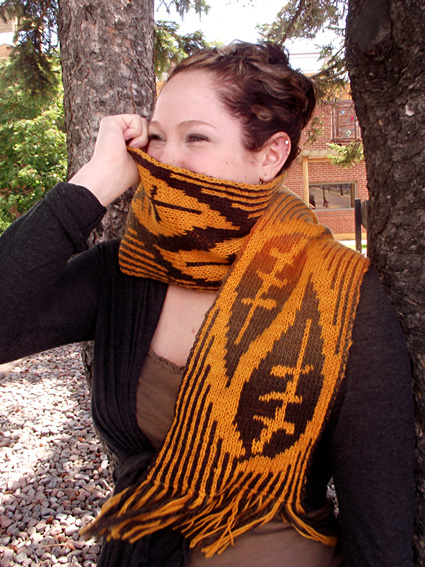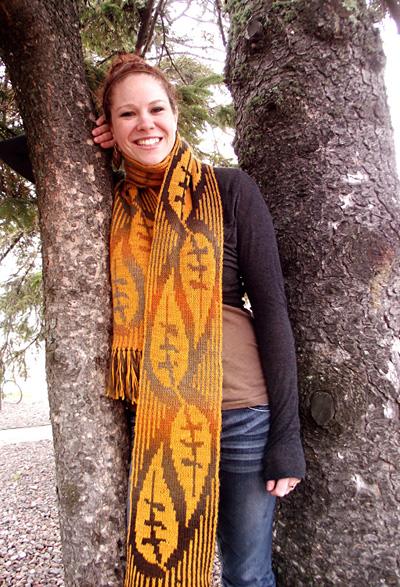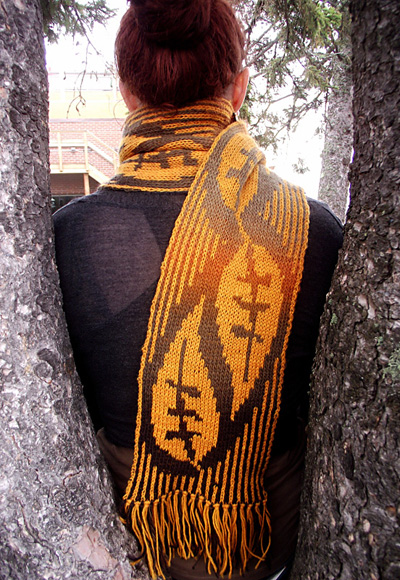

|
|
|

Leaves and grass, swirled about by the wind, can be mesmerizing. I love the colors and patterns that are created by a playful wind. This pattern was inspired by a wonderful blustery day. Double-faced knitting, done on a slightly larger needle in a fingering yarn, gives you a thick, warm fabric with a nice drape, perfect for a scarf. There is a little bit of show-through, a shadow, from the other side, which adds to its depth. |
||
|
|
 |
Tweet
 |
|
SIZE |
|
|
FINISHED MEASUREMENTS |
|
MATERIALS Notions |
|
GAUGE |
| 23 sts/22 rounds = 4 inches in double knit stockinette stitch after blocking |
|
PATTERN NOTES |
|
 Each square on the chart represents one knit and one purl stitch. On odd-numbered rows you will knit with MC and purl with CC for each green square, and knit with CC and purl with MC for each cream square. On even-numbered rows, it's the opposite: for a green square, knit with CC and purl with BC, for a cream square, knit with MC and purl with CC. This is a bit of a challenge, but once you get used to it it becomes automatic. You do not have to worry about securing the edges. The alternating colors on the sides keeps them snug. The other important thing is to always carry the two yarns together between stitches. When you knit both yarns are carried in back, when you purl both yarns are carried in the front. This puts all those messy carries in between the two sides, and gives you two lovely mirrored sides to your knitting. 3-Strand Long Tail Cast On: Do not count your slip knot as one of the stitches, you will pull it out when you are done casting on. Keep your cast on edge loose by ensuring you leave space between the stitches: the gauge on double knitting is very loose, and you do not want your cast on edge to pull in. |
The chart for this pattern is very large and fits on a letter-sized page. Click here and print the resulting page. |
|
DIRECTIONS 
Using both MC and CC, cast on 74 stitches in a 3-strand long-tail cast on as follows: CO 1 CC st, [CO 2 MC sts, CO 2 CC sts,] 18 times, CO 1 MC st. Place markers at the vertical lines on the chart (the pattern is symmetrical, and their positions help you keep track). Using the chart, complete the beginning section (rows 1-61) once. Complete the middle section (rows 62-131) a total of 5 times. Complete the final section (rows 132-159) once. Cast off with one strand of MC, using a larger needle, so the edge resembles the cast on edge. Work across the cast off edge the same way. Block. Weave in all ends
|
| ABOUT THE DESIGNER |
|
|
|
Pattern & images © 2013 Katie Viren. Contact Katie |